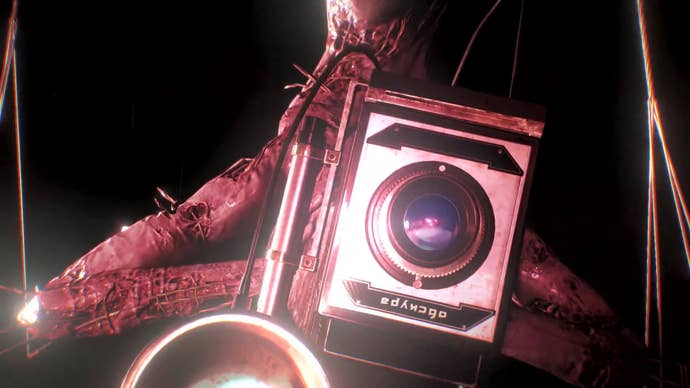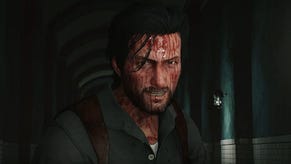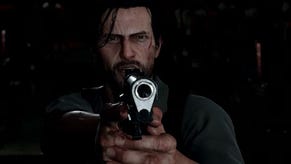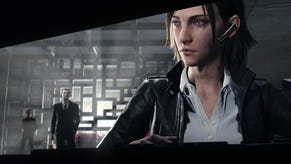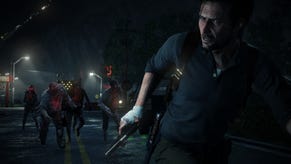The Evil Within 2 Review-In-Progress: Living the Dream
Sebastian Castellanos has his second terrible, horrible, no good, very bad day.
This article first appeared on USgamer, a partner publication of VG247. Some content, such as this article, has been migrated to VG247 for posterity after USgamer's closure - but it has not been edited or further vetted by the VG247 team.
When I reviewed the first Evil Within way back in 2014, I was decidedly mixed on Shinji Mikami's return to survival horror. The graphics were great on the surface, but only within a letterbox and they struggled to run at 30fps at times. The game didn't feel cohesive and consistent, like Mikami and company just threw every horror idea they could into a pile. The Evil Within tried to recapture the formula established in Resident Evil 4, but while it was enjoyable, it missed the mark.
Now Tango Gameworks is back with The Evil Within 2, seeking to improve upon the foundation they established with the first game. Mikami has moved into the role of producer, with John Johanas, the director of the Evil Within DLC, stepping in to direct this game. Tango Gameworks even enlisted two new writers, Hajime Ishimine and Trent Haaga, to pen the sequel's story. What the studio has produced is, so far, a much better game than the first.


Sebastian Castellanos has fallen on the hardest of times. Following the events of the first game, he's been dismissed from the Krimson City police department, as no one believed his story about the secretive Mobius corporation and its STEM device. He's busy sprinting towards alcoholism when his old protege and secret Mobius employee Juli Kidman gives him an offer he can't refuse. Sebastian thought his daughter Lily died in a house fire years ago, but Mobius actually hooked her up to the STEM and had her create the town of Union. Now everything is going wrong and Mobius wants Sebastian to jack in to STEM once again, enter Union, and save their experiment. Which is his daughter, so of course he agrees.
One of my issues with the first game was the haphazard nature of the game's story. It was fairly linear, but players would jump from setting to setting with little connective tissue. This was all explained as hopping through the villain's subconscious, but the effect was still the same regardless of reason. The setup for The Evil Within 2 anchors Sebastian within the town of Union; a large part of the game takes place in and under the town itself. More importantly, while he was a man lost in someone's else machinations before, his motivation is crystal clear this time. Sebastian is a driven man here.
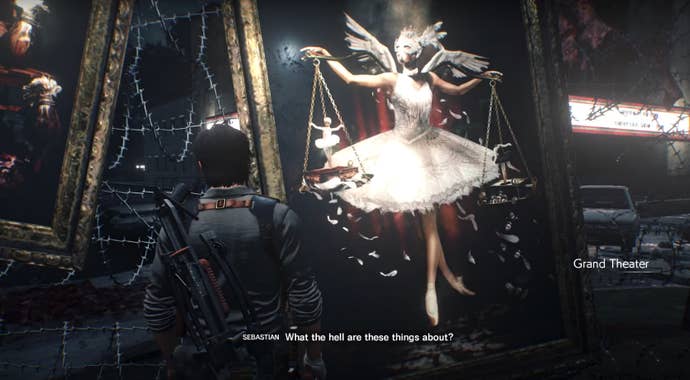
If the first game was a mix of various influences, The Evil Within 2 continues the trend. The general style of combat is still pulled from the later Resident Evil games, things like Herbs make the transition over, and the basic enemies spawn tendrils upon a headshot, not unlike RE4's Las Plagas. Mobius feels more like Resident Evil's Umbrella Corporation here, with military units, scientists, and an extensive complex under the town itself. The town of Union, twisted by the corruption of Lily's STEM world, vaguely resembles Silent Hill. Some may even see a little of The Last of Us in the design of the mutated townsfolk you need to gun down.
The difference is that The Evil Within 2 feels rather self-assured. Sure, it pulls ideas and concepts from other horror properties, but it still retains the unique psychological horror aspect of the first game. The opening of the game spends time giving you a glimpse into the twisted psyche of one antagonist before it even gives you a chance to shoot back. Sebastian frequently finds himself transported from Union to weirder, more mind-bending environments. It also helps that the different concepts behind these environments are based on specific antagonists, like the sociopathic photographer Stefano or the twisted priest Father Theodore. The framing of the story allows The Evil Within 2 to have consistency, but still have some fun.
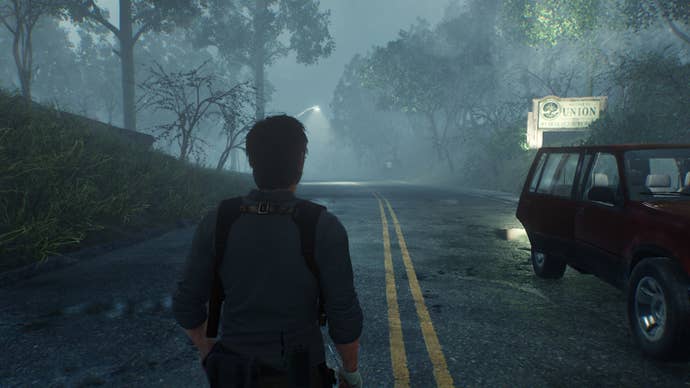

Union itself is... dense. It's not open-world and it's not the huge environment, but there are lots of areas to explore and you'll find yourself looping back over the same areas again and again. To help with the exploration, Sebastian now carries the Communicator, which you use to tune into certain frequencies around town and find points of interest. You also use it to tune into the memories of dead Mobius employees, discerning what happened in the town prior to your arrival.
While the town can feel a little slow–having to stealth crawl around a lot of the town will do that–Tango Gameworks has good control of the game's pacing. You'll jump from the wipe-open wandering and exploration within Union, to more narrow and focused sections that tend to either have boss encounters or play heavily with the environment. The back and forth between the two styles helps keep the game interesting.
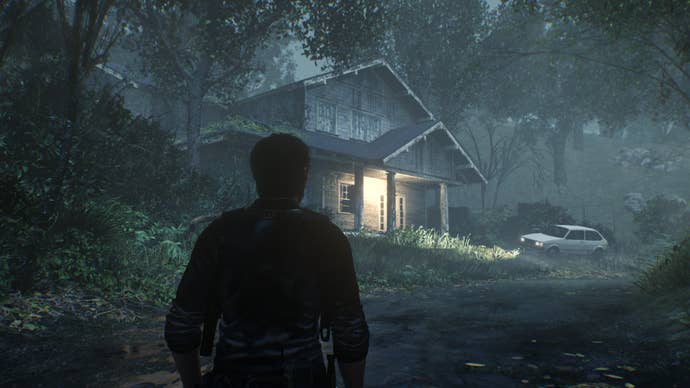
Another major change in The Evil Within 2 is a shift in the resources available. Unlike the first game, you really need to manage your ammo, crafting materials, and medical supplies. You need to use stealth whenever you can, as it quickly becomes clear that stealth kills will conserve your ammo. (Oh, and Sebastian can use his combat knife for melee strikes this time around.) If you're not careful, you can be left without any ammo in a pitched boss fight; you can craft ammo out and about, but that doesn't help if you don't have the resources.
The other stuff Sebastian needs to collect to progress aren't as rare: Parts are used for weapon improvements and Green Gel is used to upgrade Sebastian's abilities. I never really felt like I was behind the curve on either resource. You will have to make some choices in regards to both methods of progression as Tango Gameworks has locked additional tiers of upgrades behind rare versions for each resource.
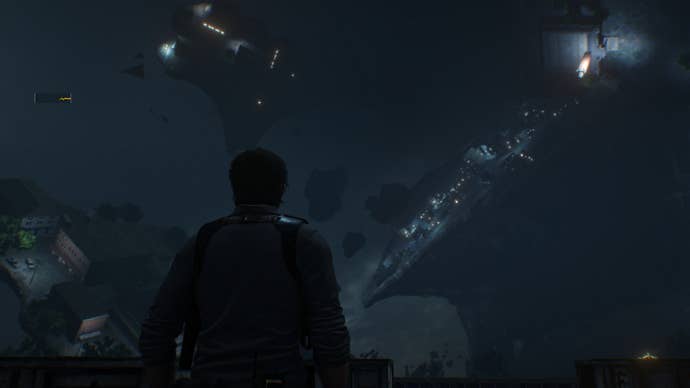
Before I wrap this up, I also want to highlight the visual presentation of this game. The Evil Within 2 is a damned beautiful game. The first one was as well, but it was letterboxed and chugged at times. This one, I had no such issues and it ran mostly at a smooth 60fps. The lighting is amazing, the texture work is great, and the environment artists get to have a ton of fun in certain areas. The animations were stiff the first time around and there's still some of that here, but for the most part, this represents a great improvement for Tango's art department.
I haven't finished the game, but it feels like it's right around the corner. From what I've played so far though, The Evil Within 2 is everything I wanted from the first game. Every major complaint I had about the first game is at least addressed in some manner, though the tweaks aren't always perfect. It's a unique psychological horror title with Resident Evil 4's action combat. Tentatively, for those folks who weren't a fan of Capcom's reboot with Resident Evil 7, The Evil Within offers something that you might like, while blazing its own trail.
